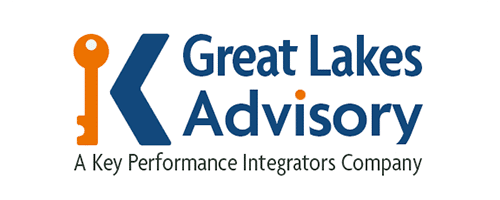It isn’t easy implementing a new process at work that ensures success as a business changes and grows. According to the Harvard Review, about 70% of change initiatives fail of change, mainly because managers don’t roll out new processes in a manner that allows team members to adjust. At the same time, they often focus on too many initiatives at once.
Luckily, there is a methodical way to deal with change process optimization. Proper business process implementation prevents chaos from creeping into daily operations and ensures a smooth transition from old to new procedures. In this blog, we explain how to implement processes in a business.
Why Is Process Implementation Important?
So, you’ve spent time and resources thinking about what needs to change in your business, and you’re excited about making improvements, but have you thought about how you’re going to implement them?
This is why an implementation process is essential. It provides a replicable framework for implementing new processes and procedures. The quality of implementation plays a critical part in bringing about the right outcomes. Poorly implemented processes are unlikely to achieve your business goals.
With effective process implementation, you turn strategy into action. A plan transforms from being something conceptual to tangible. Implementation processes also help overcome operational challenges, optimize current workflows and make sure tasks are completed on time and within budget.
Also, it provides detailed instructions, so managers and employees know what to expect, what they’re supposed to do, and how they’re supposed to do it.
Why Is Implementing New Processes and Procedures Difficult?
Below are the three most common reasons why business process implementation can be challenging:
● Lack of communication: When management doesn’t communicate the value of making changes, they don’t get buy-in from their employees, which can lead to low morale if there are issues. Employees are more empowered when they know what’s going on. Regardless of whether you share good or bad news, equipping them with information allows them to be more proactive.
● New technology: Sometimes, because there is a desire to get new technologies operating fast, training and transition time are reduced, which only causes frustration and error. Without a phased rollout, this disruption can significantly decrease productivity.
● Poor tracking and evaluation: Improvements and modifications to an implementation plan have to be made in real-time by carefully analyzing efforts. If project leaders don’t understand the scope of the changes and their intended outcomes or they don’t monitor effects, they won’t achieve key objectives.
Great Lakes Advisory’s experts specialize in helping businesses navigate this agile process. Schedule an appointment to learn how we can help!
7 Steps to Effectively Roll Out a New Process
Considering company culture, enabling clear communication, and having definitive goals will make rolling out any process easier. While these things seem obvious, they can be easy to forget while you steam ahead, breaking new business ground.
1. Set a Clear Objective
Every business wants to do well. This is a given, but it isn’t a clear objective. Developing an objective statement clarifies what the company would like to achieve. You should clearly define the business process that needs to be updated and why it needs to be done to reach company goals.
Assessing processes that require team members to perform repetitive tasks often point to areas that need optimization. Improving these can streamline time usage, reduce costs, and free up manpower to focus on other operational aspects.
2. Get Employee Feedback
It’s easy to view things from the top down, but unless you’re part of the nitty-gritty, it will be helpful to receive feedback from the actual people involved in or affected by the new process. When you ask team members for their input, you make them feel part of the process, and they are more likely to adopt change positively.
Before implementing a new process at work, you should get feedback from multiple departments. Ask different teams specific questions, like how the new process will make things easier for them. Successful process implementation relies on everyone; therefore, it’s advantageous for all teams to offer input.
3. Allocate Appropriate Resources
We can’t stress this enough. It is bad for businesses and employees when you don’t take the time to plan properly. You want to avoid any situation where you don’t have the resources to complete a process change. Making sure you have ample funds and realistic periods for designing and implementing new procedures ensures the team completes the process.
Implementing new processes and procedures sometimes involves new hires, current employees taking on additional responsibilities, purchasing new tools, and staff training. Understanding the time needed for these processes helps maintain realistic expectations and achievable objectives.
4. Clearly Communicate the Process
Always explain the value that a new process will provide your business and the affected departments. Ensure that every step is clear and that employees understand what they need to do. Having business documentation in place makes it easy to replicate processes and sets out clear responsibilities and expectations.
Depending on your process, you may have both short and long-term goals to achieve, so it’s a good idea to explain overall and incremental objectives. Setting up communication protocols and channels will help streamline the process, so employees feel comfortable asking for help or suggesting additional improvements.
5. Assign Leadership
It’s impossible to oversee everything yourself. Therefore, you need to designate leadership roles to ensure the implemented process rolls out according to plan. As always, having executive sponsorship can help drive a project forward, particularly when big decisions must be made.
Leadership also extends to the workforce. Even if team members aren’t managing the process, they must take ownership of their part in it. When restructuring processes, you might want to evaluate employees’ strengths and determine if there are better ways to utilize their natural talents.
6. Constantly Improve
You learn the most by doing. It is normal to experience teething pains during the execution phase, as everyone adjusts to the new process. However, if something truly isn’t working, then you should modify the process until you see a meaningful improvement.
For this reason, large companies often test new processes with particular departments or even specific groups within a department before implementing them across the company. It’s kind of like “beta testing,” the process to troubleshoot any potential issues before it is adopted by everyone.
Remember, processes change as technology improves, so it’s perfectly normal, and encouraged to update them if and when it serves your company’s best interests.
7. Consider Company Culture
An overlooked aspect when it comes to how to effectively roll out a new process is company culture. This permeates and defines every step of process creation and execution. Always keep the company’s core values close at hand when developing and implementing new processes.
If there is a slight change in values, it’s important to connect employees to realign employees with new priorities and make sure they feel part of future success. A strong leadership structure and open communication channels will encourage enthusiasm in adopting operational changes.
Get Expert Process Implementation Help
Of course, this seems fine and well in theory, but the actual process can feel intimidating. Just because you know how to implement a new process, doesn’t mean you’re equipped with the experience to do so. We get it; sometimes, there is a gap between theory and execution.
And that’s precisely where we come in. Great Lake Advisory’s business process consultants have the solutions to develop and implement processes that are efficient, scalable, and boost revenue. Contact us today to improve your competitive advantage through process implementation designed to achieve success.


